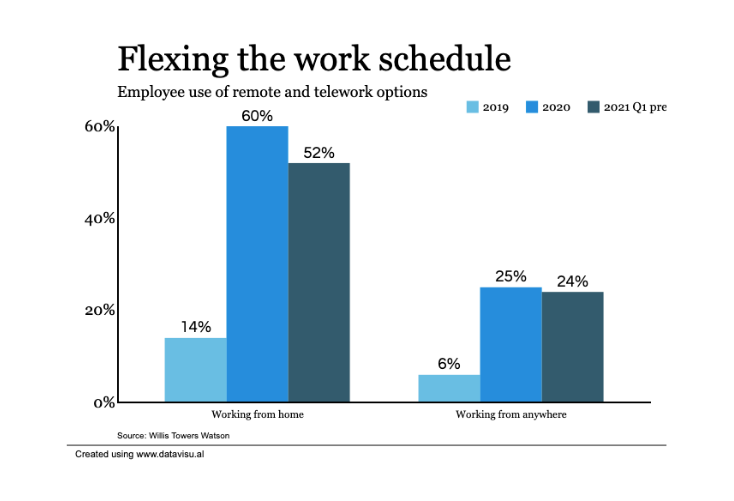Research has found that flexible work policies will remain the norm in the first quarter of the new year, and likely for the foreseeable future.
According to a survey from consulting firm Willis Towers of 344 employers, six in 10 employees are working from home, while a quarter are working from anywhere.
Additionally, employers are anticipating that over half of their employees will work from home through the first quarter of 2021, while 24% will work from anywhere.
This has left organizations to map out long-term workplace policies as employees are growing to expect some form of flexibility in the future.
“While most employers are providing flexible work arrangements for safety reasons today, employers also recognize that offering remote or flextime arrangements can play a significant role in retaining talent and keeping workers engaged and productive even after we move beyond this pandemic,” said Ravin Jesuthasan, managing director at Willis Towers Watson.
This has also led companies to consider new pay models as flexible work becomes standard across organizations. For instance, 18% of employers are setting pay levels by identifying the market value of an employee and considering their geographical location.
However, six in 10 employers said they will continue to pay their remote workers the same as their in-office counterparts regardless of where they are.


 Dr. Gleb Tsipursky – The Office Whisperer
Dr. Gleb Tsipursky – The Office Whisperer Cat Johnson – Coworking Marketing Maven
Cat Johnson – Coworking Marketing Maven Angela Howard – Culture Expert
Angela Howard – Culture Expert Drew Jones – Design & Innovation
Drew Jones – Design & Innovation Andrea Pirrotti-Dranchak – Competitive Advantage
Andrea Pirrotti-Dranchak – Competitive Advantage Jonathan Price – CRE & Flex Expert
Jonathan Price – CRE & Flex Expert Jeremy Fennema – Tech Innovation Alchemist
Jeremy Fennema – Tech Innovation Alchemist







